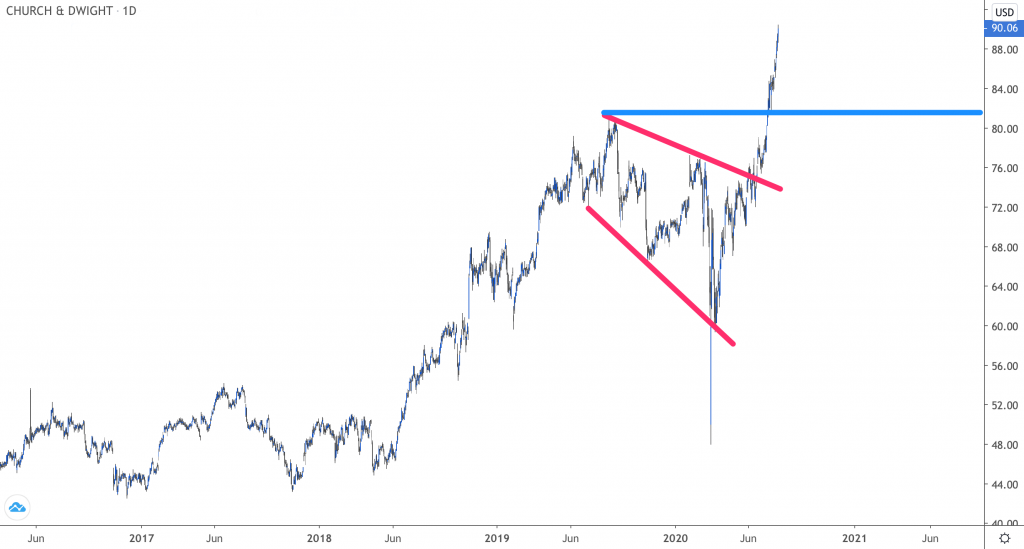There’s one corner of the sector investors should consider now & these 6 stocks fit the bill.
Consumer stocks are on the rebound.
The XLP S&P 500 Consumer Staples Sector SPDR is up nearly 1% this week, and around 7% over the last month. The ETF tracks the consumer staples sector as a whole, and despite the recent gains, is just below the flatline year-to-date as the fractured group faces uncertainty around what the coronavirus crisis will bring next.
Still, there are areas in the sector where investors can seek gains.
“You can look at food names in two groups,” said Federated Hermes portfolio manager, equity strategist, and vice president Steve Chiavarone. “There’s the stay-at-home-exposed names, and then there’s the restaurant-exposed names.”
Piper Sandler analyst Michael Lavery said in a recent note that the stay-at-home-exposed trend, including packaged-goods, is here to stay. According to Lavery, results of the firm’s latest coronavirus-related survey “suggests a sustainable lift for food-at-home sales of perhaps 15% or more,” with two-thirds of respondents saying they are likely to eat more at home than they did before, even post-COVID-19.
Seaport Global Securities initiated coverage this week on a handful of stocks that fit the “stay-at-home-exposed” bill, giving Buy ratings to Archer-Daniels-Midland (NYSE: ADM), Kellogg (NYSE: K), Mondelez (NASDAQ: MDLZ), and Simply Good Foods (NASDAQ: SMPL).
Given that there have been surges in coronavirus cases in hotspots throughout the country, Chiavarone said that’s bad news “for the restaurant names [and] very good for the stay-at-home names.”
“However, when and if we do get progress on a vaccine and we start to see a reacceleration of reopening again, you probably have a lot of value in the restaurant names,” Chiavarone added. “So from our perspective, we’re leaning towards the stay-at-home portion, but we’ve got a real watchful eye on the restaurant-exposed names here.”
Ascen Wealth Partners managing director Todd Gordon says the consumer staples sector is “generally mature,” full of slow growth, and “very fully valued.”
However, “because we’re seeing a move down in interest rates, we’re starting to see staples have a pretty good degree of correlation towards rates,” Gordon said. “In terms of valuations, according to S&P, staples are trading about 20 times next year’s earnings, estimated to grow at about 5%. If you compare that to technology, which is at 24 times next year’s earnings, they’re expected to grow 14%. So, staples are fairly fully valued.”
Gordon added, though, that there’s one company that he likes in the space: Church & Dwight (NYSE: CHD).
The company is largely focused on health, sanitation and personal care with brands including pantry staples like Arm & Hammer, OxiClean, and Orajel.
“We like its long-term prospects,” Gordon said. “It’s one of the better kind of top-line growers. They have a lot of exposure to cleaning supplies. They’ve been gaining market share.”
Bonus: Gordon says “the chart looks good.”

Church & Dwight shares broke out of a falling channel and have since broken up past the previous high just above $80.
“We broke through 80 as resistance, and what was resistance becomes support,” Gordon said. “So, we hold CHD, but generally underweight staples.”
Gordon added though that the work-at-home and stay-at-home trend is here to stay and has brought about a “new norm” for dividend plays.
“We’re starting to see more technology stocks with rock-solid balance sheets, fortress balance sheets, yet dividends are not going anywhere, act more [like] staples than staples are acting,” Gordon said, pointing at Apple (NASDAQ: AAPL) as an example. “There’s just unbelievable amounts of examples of tech that’s paying a solid dividend and that’s acting as sort of a defensive sector in here.”